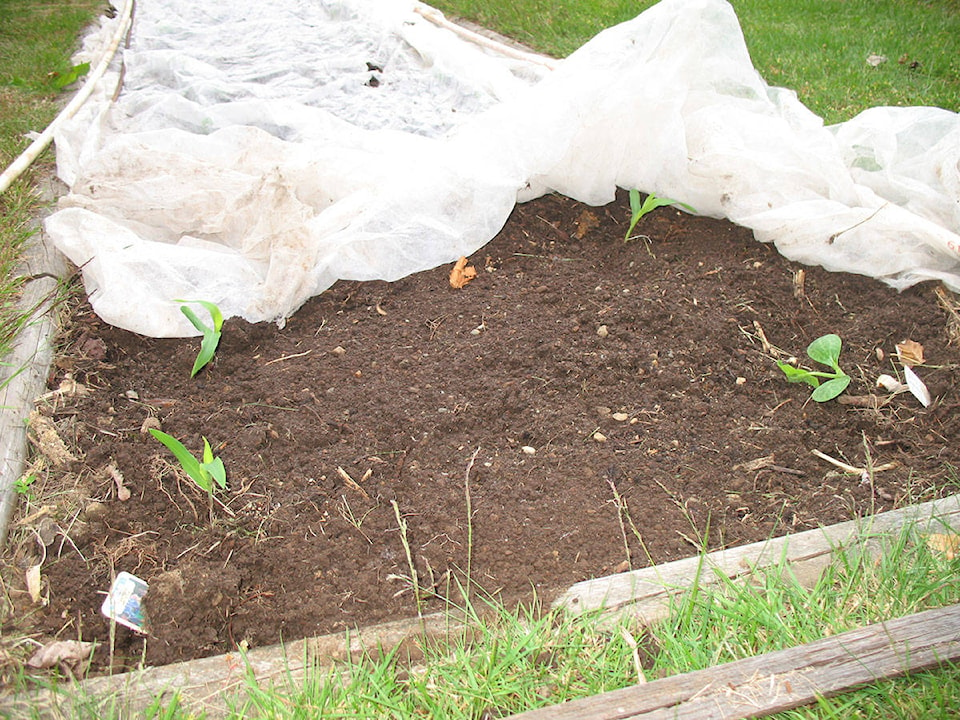By Mary Lowther
In a small yard like mine, it’s difficult to separate different varieties of whatever I’m growing. There are several avenues open to those of us who want to grow out crops true to their genetic inheritance.
We can decide on one variety and grow only that kind year after year, enabling it to adapt to the particular climate in which our garden dwells. My “Laurel’s Frilly Kale” produces very well every year and I like its flavour and ability to re-seed itself, giving me effortless kale seedlings every year. It even grows in unwatered, hardpacked soil at the bottom of my back stairs, so I just allow it to grow and step over it.
Another method involves growing one variety per year, and saving the seed separately, thus allowing pollination of only the particular variety growing that year. Keeping good notes helps here. Labels I’ve made and planted alongside a crop have disappeared into oblivion, probably lining some Stellar Jay’s nest, so I keep a map of my garden in a notebook, indicating which varieties of crops grow where. Some plants, like zucchini and winter squash, will cross pollinate, so I grow them as far apart as possible, which is about 45 feet. It’s worked so far in the last 12 years I’ve been saving seed.
Some crops like tomatoes don’t cross pollinate well, and I’ve saved seed from different varieties grown the same year that have developed true to their ancestors.
This year I’m seeing if I can grow different varieties of corn by staggering their planting times. I’ve transplanted a Sunnyvee/Bantam Cross from my seed bank on one third of the bed. I’ll transplant the next crop in one week; Midnight Snack, a sweet corn to begin with that gradually turns blue and suitable for cornmeal. Perhaps I can nixtamilize it and grind it up more finely to make flour for tortillas. Nixtamilization involves soaking the kernels in a lime water solution, increasing its nutritional value and softening the grain.
The last third planted the following week will be Sunnyvee/Bantam again. I’m keeping my fingers crossed that they won’t cross pollinate with each other. Because the Midnight Snack corn turns blue, it will be easy to tell.
One year, just for fun for my granddaughter, I grew a corn variety called Gem, alongside my Golden Bantam. Gem produced gorgeous glowing kernels with many colours so it was easy to see where it cross-pollinated and I was still able to save Bantam corn seeds from the far end of the bed, even though the distance between different corn varieties should be two miles. These saved seeds are four years old now and still growing true to form, so it’s always worth stretching the boundaries.
One may also deliberately cross-pollinate certain varieties to develop a strain. For example, the year I grew Sunnyvee and Bantam corn at the same time, I liked them both — Bantam tasted wonderful and Sunnyvee was good but a bit longer, so I saved the seeds in the few rows where they met and have been growing these ever since. Some of them are Bantam sized and some longer and they all taste like Bantams.
Please contact mary_lowther@yahoo.ca with questions and suggestions since I need all the help I can get.
